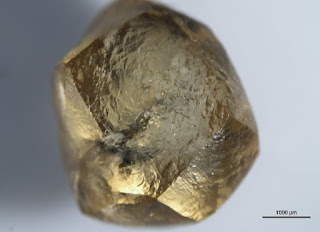Diamonds Reveals earth formation!
GIA
scientist Dr. Karen Smit inks
Sulfur
Isotopes in Diamonds!
Diamonds,
long prized for their beauty and rarity, continue to reveal clues about the
early history of our planet. To better understand how the most ancient
continents came to be, researchers examined tiny mineral remnants trapped in
diamonds during the formation of the earth.
The
results were published in Science magazine, in the article Sulfur Isotopes in
Diamonds Reveal Differences in Continent Construction by GIA (Gemological
Institute of America) research scientist Karen Smit; Steven B. Shirey and the
late Erik H. Hauri of the Department of Terrestrial Magnetism of the Carnegie
Institution for Science; and Richard A. Stern, a research scientist at the
University of Alberta.
 “Diamonds
are one of the most valuable gems, not only as jewelry but also in geoscience,”
said GIA research scientist Dr. Karen Smit, the lead author of the recently
published article in Science.
“Diamonds
are one of the most valuable gems, not only as jewelry but also in geoscience,”
said GIA research scientist Dr. Karen Smit, the lead author of the recently
published article in Science.
“The mineral inclusions in diamonds let us study
the inaccessible depths of Earth – somewhere that today’s science cannot
otherwise reach.”
The
researchers examined diamonds from the Zimmi mining area near the Libera-Sierra
Leone border, which is known for producing yellow diamonds.
The Zimmi diamonds
are classified as Type Ib diamonds because they have rare nitrogen impurities.
Type Ib diamonds are exceptionally rare in nature, accounting for less than
0.1% of natural diamonds mined worldwide.
By
laser-cutting and polishing very thin plates from the Zimmi diamonds, the
researchers were able to isolate and study sulphide inclusions, extracting
chemical isotopes that offered clues to when the diamonds – and the deepest and
oldest parts of the continents formed.





Comments
Post a Comment